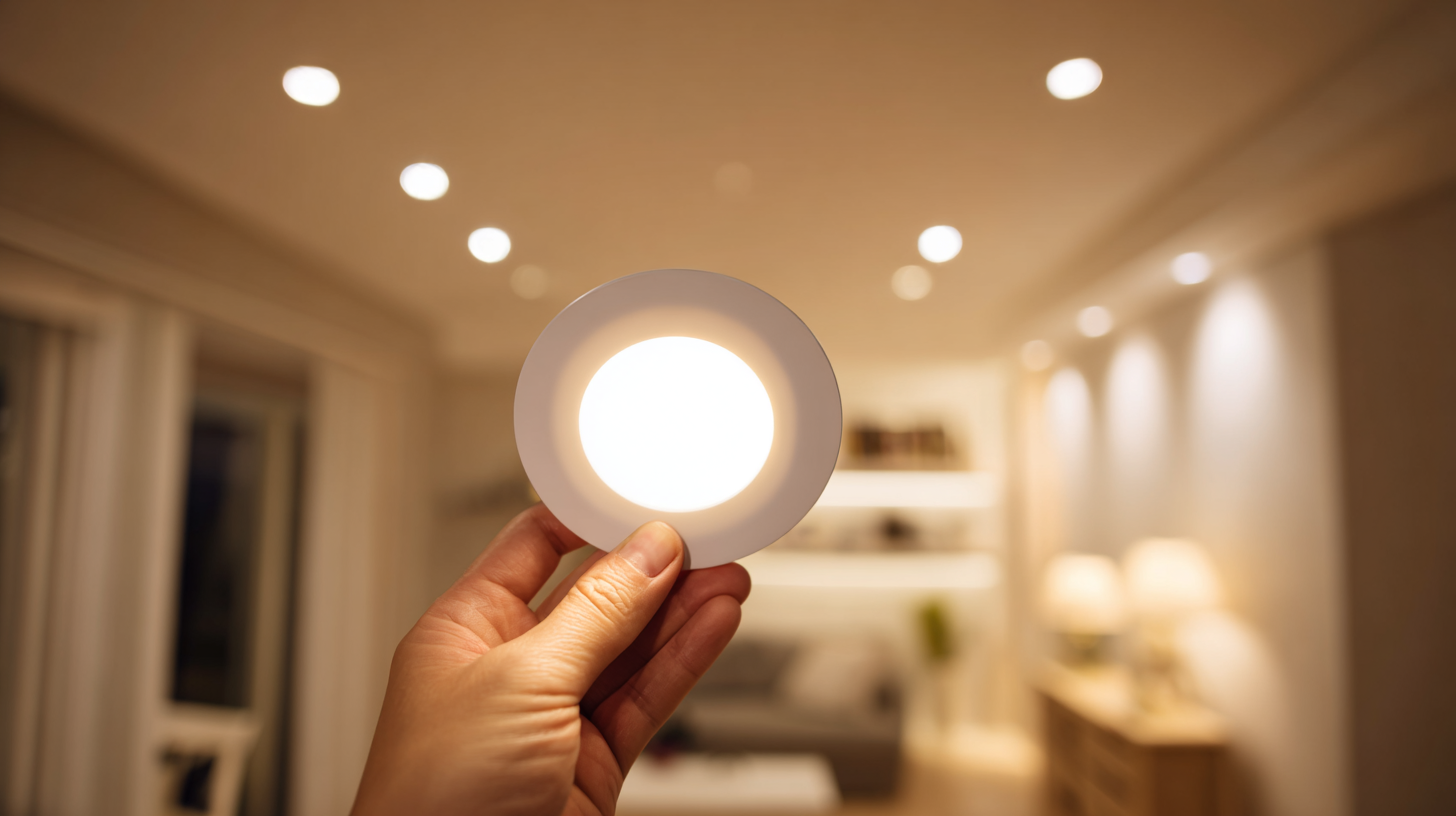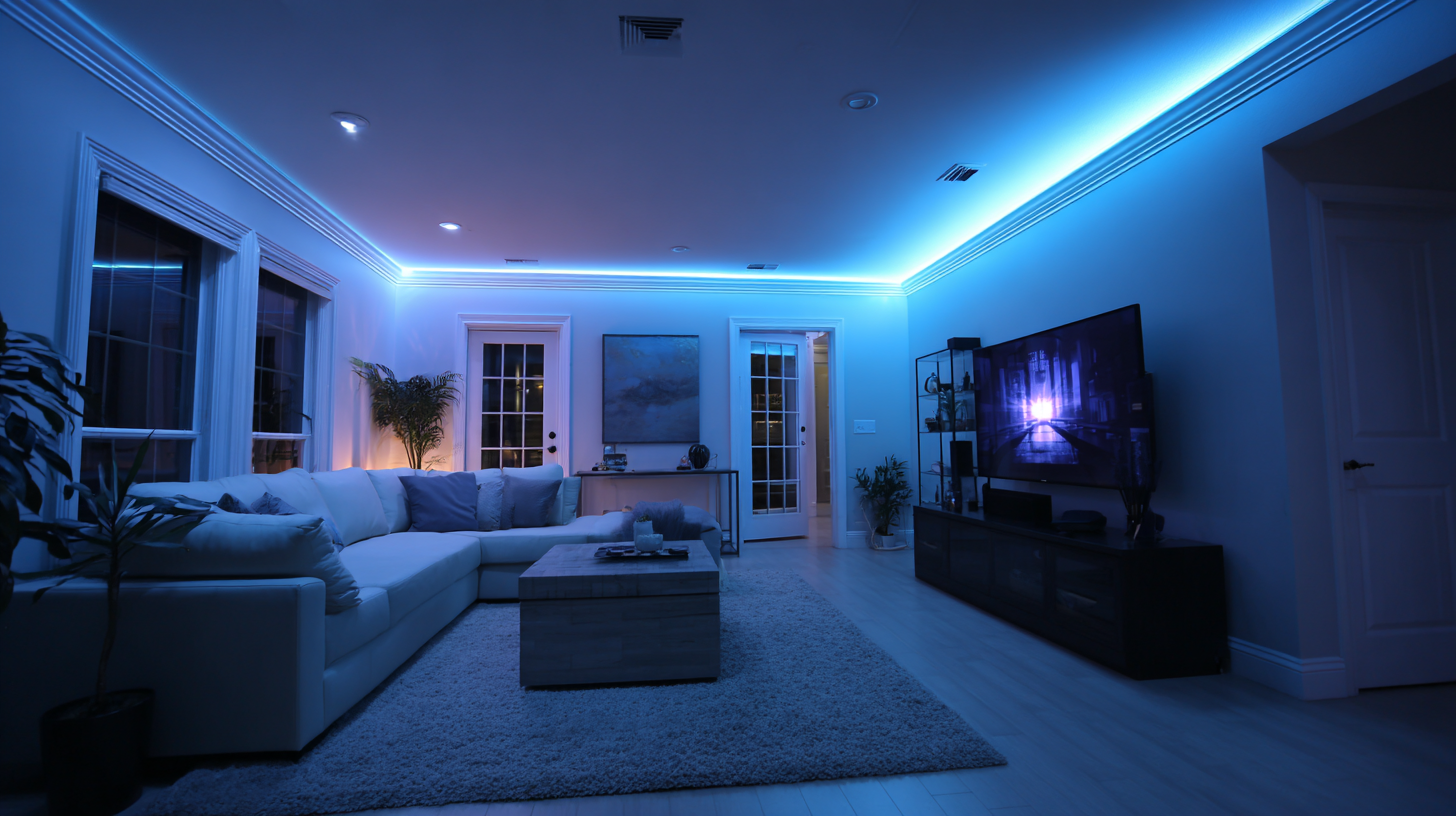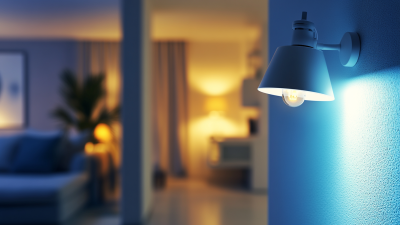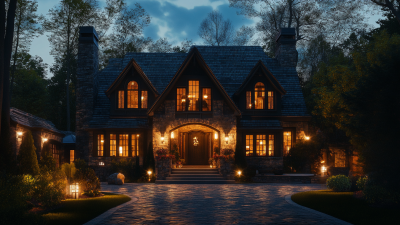Edison LED Lighting
Projects
The Ultimate Guide to Choosing the Perfect LED Down Light for Your Home
In the quest for the perfect lighting solution for your home, LED down lights have emerged as a popular choice due to their energy efficiency, longevity, and sleek design. Understanding how to select the right LED down light can transform your living space, enhancing both aesthetics and functionality. With various options available in terms of brightness, color temperature, and design, it is essential to consider several key factors to ensure that your choice complements your home's style while providing the desired ambiance. In this ultimate guide, we will explore invaluable tips and insights to help you navigate the complexities of choosing the ideal LED down light for any room in your home. Whether you're renovating a specific area or simply updating your lighting fixtures, this comprehensive resource will empower you to make informed decisions that light up your life beautifully.

Understanding LED Down Light Basics: Types and Benefits
When selecting the perfect LED down light for your home, it's essential to understand the basics of LED down lights, including their types and benefits. LED down lights, commonly known for their energy efficiency, come in various shapes and sizes, catering to different lighting needs and design aesthetics. The three primary types include fixed, adjustable, and wall wash down lights. Fixed lights provide a straightforward solution for illuminating specific areas, while adjustable lights allow for greater flexibility in directing light where it's needed. Wall wash down lights create a soft ambient glow on walls, enhancing the overall atmosphere of a space.
The benefits of LED down lights extend beyond just their versatility. They consume significantly less energy compared to traditional incandescent bulbs, resulting in reduced electricity bills and a lower carbon footprint. Furthermore, LEDs have a longer lifespan, often exceeding 25,000 hours, which means less frequent replacements and less waste. Additionally, these lights offer immediate brightness without the warm-up time associated with other bulb types, making them ideal for both functional and decorative lighting in homes. Understanding these fundamentals empowers homeowners to make informed choices that enhance both the aesthetics and efficiency of their living spaces.
The Benefits of Different Types of LED Down Lights
Key Factors to Consider When Choosing LED Down Lights
When selecting LED down lights for your home, several key factors must be taken into account to ensure you make the perfect choice. First and foremost, consider the brightness and color temperature of the lights. Measured in lumens, a higher lumen count translates to a brighter light, while color temperature, indicated in Kelvins, affects the ambiance. Warmer tones (around 2700K-3000K) create a cozy atmosphere, perfect for living spaces, while cooler tones (4000K-5000K) are often better suited for work areas like kitchens and offices.
Another critical factor is the beam angle of the down lights. Depending on the application, you may opt for a narrow beam angle for accent lighting, which highlights specific features, or a wider beam angle for general illumination across larger areas. Additionally, consider the compatibility of the LED down lights with existing fixtures and dimmer switches in your home. Ensuring that your chosen lights work seamlessly with your electrical setup enhances the overall efficiency and functionality, allowing you to create the desired atmosphere in each room.
Tips for Selecting the Right Brightness and Color Temperature
When selecting LED down lights for your home, understanding brightness and color temperature is crucial. The brightness of LED lights is measured in lumens, and the right amount for residential spaces typically ranges from 300 to 800 lumens per fixture, depending on the room’s size and purpose. For example, kitchens often require brighter illumination for tasks, potentially exceeding 800 lumens, while bedrooms may only need 300-500 lumens, creating a cozy atmosphere. According to the U.S. Department of Energy, proper lumens help achieve effective lighting control and energy efficiency, significantly impacting your electricity bills.

Color temperature, measured in Kelvin (K), influences the ambiance and functionality of a room. Warmer tones (2700K-3000K) create a welcoming and relaxed environment, ideal for living rooms and bedrooms, while cooler tones (4000K-5000K) are best suited for workspaces or kitchens, stimulating alertness and concentration. A report from the Lighting Research Center suggests that choosing the right color temperature can enhance feelings of comfort and well-being, making it essential to align your lighting choices with the intended use of each space in your home.
Exploring Energy Efficiency Ratings and Lifespan of LED Down Lights
When selecting LED down lights for your home, understanding energy efficiency ratings is crucial. These ratings, often indicated by the Energy Star label or similar certifications, help consumers make informed choices about their lighting options. The efficiency of an LED down light is typically measured in lumens per watt (lm/W), with higher numbers signifying greater efficiency. This means that an LED fixture can produce more light while consuming less electricity, ultimately leading to reduced energy bills and a smaller carbon footprint.

Another important aspect to consider is the lifespan of LED down lights. Unlike traditional incandescent bulbs, which may last about 1,000 hours, quality LED down lights can provide up to 25,000 to 50,000 hours of illumination. This extended lifespan not only minimizes the frequency of replacements but also contributes to overall cost savings over time. When evaluating different products, it's essential to check the manufacturer's claims regarding lifespan, as this can vary significantly across brands. By prioritizing both energy efficiency and longevity, homeowners can make choices that enhance their living spaces while also being environmentally responsible.
Installation Tips and Best Practices for LED Down Lights in Your Home
When installing LED down lights in your home, it’s essential to consider the layout and design of your space. Begin by determining the optimal locations for light placement. Generally, spacing down lights 4 to 6 feet apart creates an evenly distributed glow without harsh shadows. Pay attention to areas that require more illumination, such as kitchens and reading nooks, and adjust your placements accordingly to enhance functionality.
Another crucial aspect of installation is ensuring proper wiring and safety protocols. Always turn off the power at the circuit breaker before starting any electrical work. Use junction boxes rated for LED fixtures to prevent overheating and ensure longevity. When mounting the lights, ensure that they are flush with the ceiling and in line with local building codes.
Lastly, don't forget about dimmer compatibility. Many LED down lights work seamlessly with dimmer switches, but it’s vital to check for compatibility to avoid flickering and extending bulb life. Choosing the right dimmer can enhance the ambiance of your space by allowing you to adjust the brightness according to your needs, making your home more comfortable and energy-efficient.
The Ultimate Guide to Choosing the Perfect LED Down Light for Your Home
| Dimension | Description | Best Practices |
|---|---|---|
| Lumens | The measure of visible light emitted by a source. | Choose lumens according to the room size; more lumens are needed for larger spaces. |
| Color Temperature | Measured in Kelvins (K), it affects the mood of the room. | Select warm white (2700K-3000K) for a cozy atmosphere or cool white (4000K-5000K) for a modern look. |
| Beam Angle | The angle at which light is emitted from the fixture. | Wider angles (120°) work well for general lighting, while narrow angles (30°) are better for highlighting features. |
| Dimming Capability | The ability to adjust the brightness of the light. | Ensure compatibility with dimmer switches to enhance ambiance. |
| Installation Type | Types include recessed, surface-mounted, and pendant options. | Choose installation type based on ceiling height and style preferences. |
| Energy Efficiency | Rated by lumens per watt (lm/W). | Opt for LEDs with higher lm/W for better energy savings. |
Related Posts
-

Unlocking the Future of Smart Lighting with Cutting Edge Technical Specifications
-

Envisioning Tomorrow: Innovations in LED Lighting Solutions for Global Trade
-

Mastering the Art of Home Lighting to Enhance Your Living Space
-

Mastering the Art of Choosing the Best LED Lighting Solutions: A Comprehensive Tutorial
-

Innovative Alternatives for Achieving the Best Led Lighting Solutions in Modern Industries
-

What is the Future of Best LED Down Lights? Insights and Trends for Global Buyers
